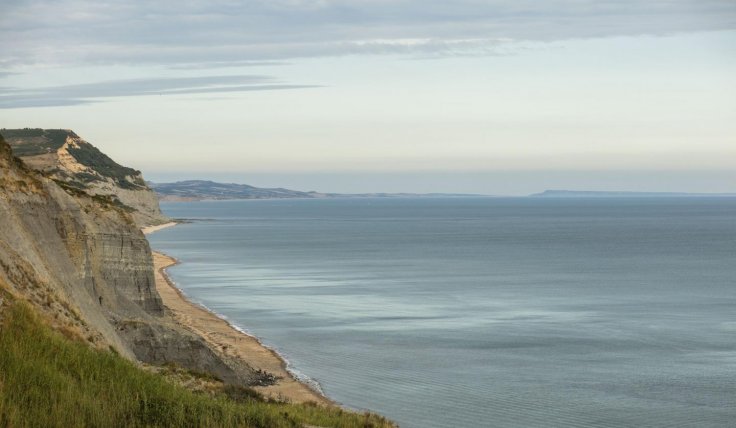It is not often that one finds an intense wild encounter captured for eternity within fossils. One such pre-historic relic from 200 million years ago has been discovered by scientists where a squid-like animal was fossilized with prey in its mouth near Charmouth in Dorset, the UK.
In a study led by researchers from the University of Plymouth, the fossil discovered in the 19 century on the Jurassic coast of southern England and belonged to the Sinemurian period (between 190 and 199 million years ago) was analysed. Within the fossil is a Clarkeiteuthis montefiorei, an ancient creature resembling a squid, with a fish (Dorsetichthys bechei) ensnared in its jaws.
Highlighting the unusual nature of the discovery, Malcolm Hart, lead author of the study, said in a statement, "It points to a particularly violent attack which ultimately appears to have caused the death, and subsequent preservation, of both animals."

Compelling evidence of an attack
Based on their analysis, the scientists are convinced that what is encased within the fossil is the paleobiological proof of a 'predator attacking prey' scenario. They said that the positioning of the Clarkeiteuthis' arms offers strong evidence that it is not a chance fossilisation of two creatures together but a real attack preserved in time.

The paleontologists' analysis further revealed that during the course of the attack, the bones in the fish's head were crushed. The age of the fossil, nearly 200 million years, predates any previously catalogued sample of a similar nature by over 10 million years.
Hart said that valuable fossils offering better understanding of coleoid( palaeontology have been found in the mudstone formations across the Dorset coast since the 19th century. He emphasized that, "In many of these mudstones, specimens of palaeobiological significance have been found, especially those with the arms and hooks with which the living animals caught their prey."
What could have happened?

In order to explain the extraordinary nature of the reliquiae, the scientists have formulated two hypotheses. The first suggests that the prey was enormous for the ancient squid or was lodged in its jaws. With both the creatures dead, the pair sunk to the bottom of the ocean where they eventually fossilized.
The alternative theory proposes that Clarkeiteuthis dragged the fish to the seafloor. And during this process, it is possible that it engaged in 'distraction sinking' to evade an attack from another predator. This act, however, could have proved fatal for the Clarkeiteuthis as it sunk to deeper waters and suffocated due to lack of oxygen.
The study was led by the University of Plymouth and conducted in collaboration with University of Kansas and Dorset-based company, The Forge Fossils. The fossil is currently a part of the collections at the British Geological Survey in Nottingham.









